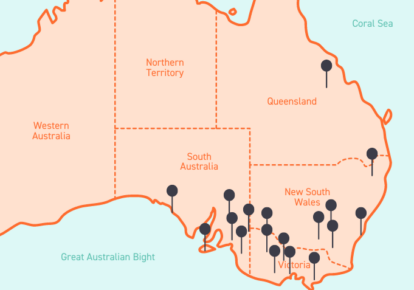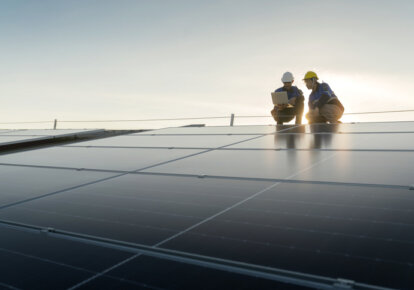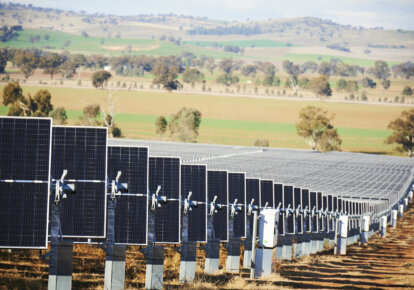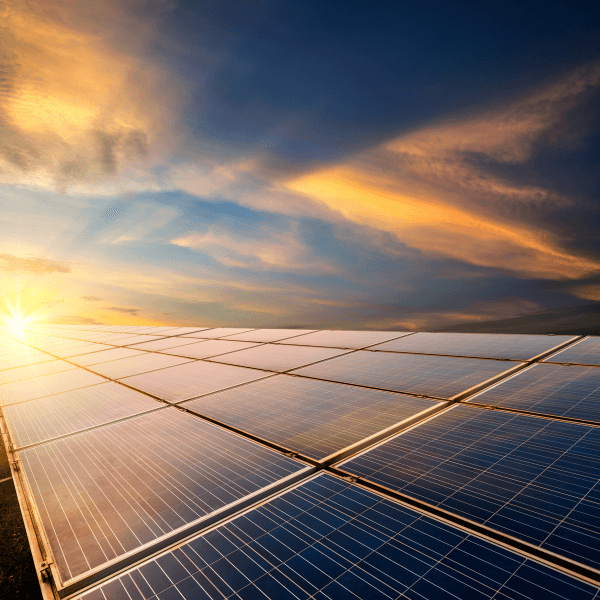Compared to previous months, the electricity market in January 2023 was quiet and uneventful. While electricity prices were higher on average than December, they were still lower than in the middle of 2022.
Gas prices across the National Electricity Market increased slightly, though they are currently still at levels to support sustainable marginal running costs for generators.
Average demand was up at all times of day in the mainland regions – especially through the middle of the day and evening peak). However, fewer generation and transmission outages meant the elevated demand was met.
New South Wales, Queensland, and South Australia had isolated incidences of extreme spot prices, which were caused by sudden unexpected increases in demand or shortfalls in supply. These changes were not present in the Australian Energy Market Operator’s own demand/supply forecasts and lasted for only one trading interval.
Electricity price insights
Across the four mainland regions, January’s average demand was lower than January 2022, though higher than December 2022. Unsurprisingly, this year-on-year decrease in demand was stronger in the middle of the day, which corresponds with higher rooftop solar generation.
This was partially reflected in average spot prices throughout the day in January, which hollowed out in the middle of the day (when compared to January 2022). It was this cheap, middle of the day period which led to January 2023 having the most hours of negative prices for any January on record!
Interestingly, while the middle-of-the-day prices were record lowest in 2023, the morning and evening peaks were more expensive. This is due to a combination of increased cheap renewable penetration in the middle of the day and increased fuel costs resulting in higher marginal costs for generators that run through the peaks and overnight.
While government intervention capped coal prices (which impacted wholesale gas prices), January 2023’s capped prices are still higher than January 2022.
Forward prices for 12-month contracts starting in July 2023 finished rose throughout the month in all regions except South Australia.

January 2023 NEM insights – by state
Click on our dynamic graph below to view the figures for your state:
- New South Wales prices are up 59% from a year ago, and up 17% from December 2022
- Queensland prices are up 61% from a year ago, and up 10% from December 2022
- South Australia prices are up 80% from a year ago, and down 3% from December 2022
- Victoria prices are up 77% from a year ago, and up 11% from December 2022
New South Wales January 2023

- Average spot price of $94.39/MWh, with 27 hours of negative prices and 4 hours above $300/MWh
- $100/MWh difference in average underlying spot prices at the cheapest (mid-morning) and most expensive times of day
- 37% total renewable generation through the month
- Peak demand of 11,035 MW, and minimum demand of 4,450 MW
Queensland January 2023

- Average spot price of $98.96/MWh, with 36 hours of negative prices and 9 hours above $300/MWh
- $160/MWh difference between the average underlying prices at the cheapest and most expensive times of day
- 27% total renewable generation through the month
- Peak demand of 9,357 MW, and minimum demand of 4,324 MW
South Australia January 2023

- Average spot price of $57.20/MWh, with 214 hours of negative prices and 15 hours above $300/MWh
- $140/MWh difference between the average underlying prices at the cheapest and most expensive times of the day, with the late morning to noon averaging negative prices for the entire month
- 82% total renewable generation through the month
- Peak demand of 2,526 MW, and minimum demand of 210 MW
Victoria January 2023

- Average spot price of $48.09/MWh, with 195 hours of negative prices and less than 1 hour above $300/MWh
- $130/MWh difference between lowest (around noon) and highest (evening peak) time-based average underlying spot price, with the mid-morning to noon averaging negative prices for the entire month
- 35% total renewable generation through the month
- Peak demand of 8,949 MW, and minimum demand of 2,656 MW
What our experts forecast for February 2023
In February, spot prices have historically been similar to the preceding January. As is typical of hotter months in summer, February carries a higher risk of price volatility due to hot weather and increased cooling demand.
The continuation of previously set government caps on gas and coal are likely to keep energy prices stable (barring volatility from unexpected events).
Outages and constraints
At the time of publishing, there are some coal and gas generators down for maintenance (both planned and unplanned) though the largest are set to return in the first week of February.
One of the two Callide C units previously scheduled to return in May 2023 has been further pushed back to the end of June, though the other is still on track for a May return.
There are not many generator maintenance downtimes currently planned for February 2023, though unplanned outages are always a risk.
Warmer weather ahead
The Bureau of Meteorology has forecasts which suggest the current La Nina condition to end in February, which would result in a return to historically average levels of rainfall. However, February will still likely be a wetter-than-average month.
Other Bureau outlooks have predicted higher-than-historical-median maximum temperatures through February in Queensland, South Australia, and Tasmania, though lower maximums in New South Wales and Victoria.
Minimum temperatures are likely to be higher than historical median minimums across Australia. These higher temperatures coincide with typical summer behaviour and could increase cooling demand across the NEM.
Any questions? Our energy specialists are here to help.
If you’re an existing Flow Power customer, please do not hesitate to reach out to your account manager.
If you’re not a Flow Power customer, feel free to contact our friendly team:
? 1300 08 06 08
Alternatively, you can submit your questions through our website contact form here.














